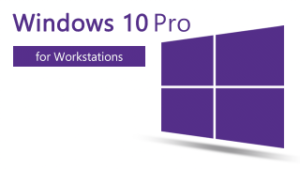Each interested person wants SEO Friendly Website, and they click on how to make SEO-Friendly Websites. Three Steps can help you to rank higher in the search result for your Website or Page (Blog posts). These Three Steps will be easy if you understand the main points and do for your Website. In this Blog Post, we’ll discuss intensely On-Page SEO of a Website or Page (Blog Post).
Three Steps SEO-Friendly Website
There are three Steps to optimize your Website or Page (Blog Post) to make SEO Friendly Website.
SEO Friendly Website: On-Page SEO
A Basic and Essential Step to Optimize Post Blog and Off-site SEO. So in this portion, we’ll closely discuss On-Page SEO in the points.
1. Use Keywords inside Your Content
During content writing, use SEO Friendly keywords inside your content to optimize your Plog Post and Website and to make a higher position in search engine result pages.
It is a crucial point to improve your site or Blog Post. When you write content, include related keywords to increase the capability of the Search engine to recognize which keyword your Website or blog post is about.
Before Writing, you should research keywords for which you will be writing content or blog post. Suppose you write content about and main keyword search pet medication, and you’ll get results of other keywords such as Pet Med and pet medications & supplements.
Additionally, some people look at online tools for automatic search with many features like Search Volume globally, intent, CPC etc. You can subscribe to such online tools as Semrush, Ahrefs, and Google Trends.
2. Using a Unique Title and Description
For done SEO Friendly Website, Use a Unique meta title (<h1>Tags<h1>) and description for all pages (Blog Post).
Your Title should include the main keyword, and the characters must consist of 55 to 60.
These titles are essential for search engine indexing and recognizing pages (Blog Posts). So that tells the visitor what about your webpage. However, these meta titles help in Google search engine crawling.
Once your article (blog post) is uploaded, the URL of that Blog Post title is also the same. If you want to update your Title, the URL remains the same as your previous Title.
3. URL Clean Structure
A Clean URL Structure is vital for SEO Friendly Website or Page (Blog Post). An SEO Friendly URL is easy to read, understand and relevant to the page’ ( Blog Post ) Context.
For Permanent URLs, ensure all characters are in lowercase, descriptive, separated by dashes, and contain keywords organically for more visibility.
4. Write A Unique Content
Before Writing, you must remember that your content should be unique, helpful for the audience and contain 0% plagiarism. The search engine will flag the Website with plagiarised content if did with includes plagiarism, which can reduce your Website’s SEO friendliness. However, the Search engine won’t rank your Website or page (Blog Post).
5. Optimize Images
The Website or Page (Blog Post) should contain optimized images. If the image size is larger than 40 to 50 Kb, it may take some time to open it, and the page speed increase.
An SEO Friendly Website without an optimized image is not suitable for your Website, although also add alt text to the image helps search engine crawlers to recognize what the image is about.
6. Content Written in Proper Structure
Your page (Blog Post) must ensure that content creates in a proper structure SEO Friendly. Such as it makes it easy to read to index the Website or Page (Blog Post).
The general structure of the page (Blog Post) should have this type.
- Header (URL)
- Page Title (H1 Tag)
- Content with Subheadings (H1, H2, H3… tags for proper structured content distribution)
- Author Bio/Information, Sharing Options
- Conclusion
- FAQs
7. Mobile-Friendly Website
Ensure your Website or Page (Blog Post) is responsive to any devices they visit. You must fix it if your Website or pages (Blog posts) are unresponsive on any device to keep its SEO health intact.
8. Internal Links in Page (Blog Posts)
Add internal links to your Page (Blog Post). You should understand that it helps collaborator crawlers in relevant pages (Blog Posts) together and create a robust internal structure to boost your Website’s SEO friendliness.
Relevant Post Blog: Off-Page SEO
9. SEO-Friendly Website: Meta Description
When you write the complete content with all mentioned in mind the points, additionally, the most important to do for SEO Friendly Website is Meta Description. Make sure that should be the Meta description is attractive and unique and helps to attract visitors.
Social Media Promotional & Obtain The Community By Whatsapp Groups Links
What Does IPVanish VPN And How To Get It Free
Windows 10 Pro Product Key
Download Uplive – A streaming App With Diamond
Get Free NordVPN Premium Account
How To Get a Free Turbo VPN Subscription
Free Disney Plus Accounts & Updated List With Username And Passwords
Top 5 Payment Gateways & Enhance Your Revenue
How To Get Free Zenmate VPN Account
IPL 2023 Fixtures: Full Schedule, Time Table & Venues, Teams Captains
Conclusion
SEO-Friendly Website, Before writing the content, you should remember in mind these Nine Points. However, Off-Page SEO and Technical SEO are important for SEO Friendly Websites. So, you must read the article about Off-page SEO and Technical SEO. You need to scroll up and click on where the write (Three Steps SEO-Friendly Website) Off-Page SEO or Technical SEO.





















